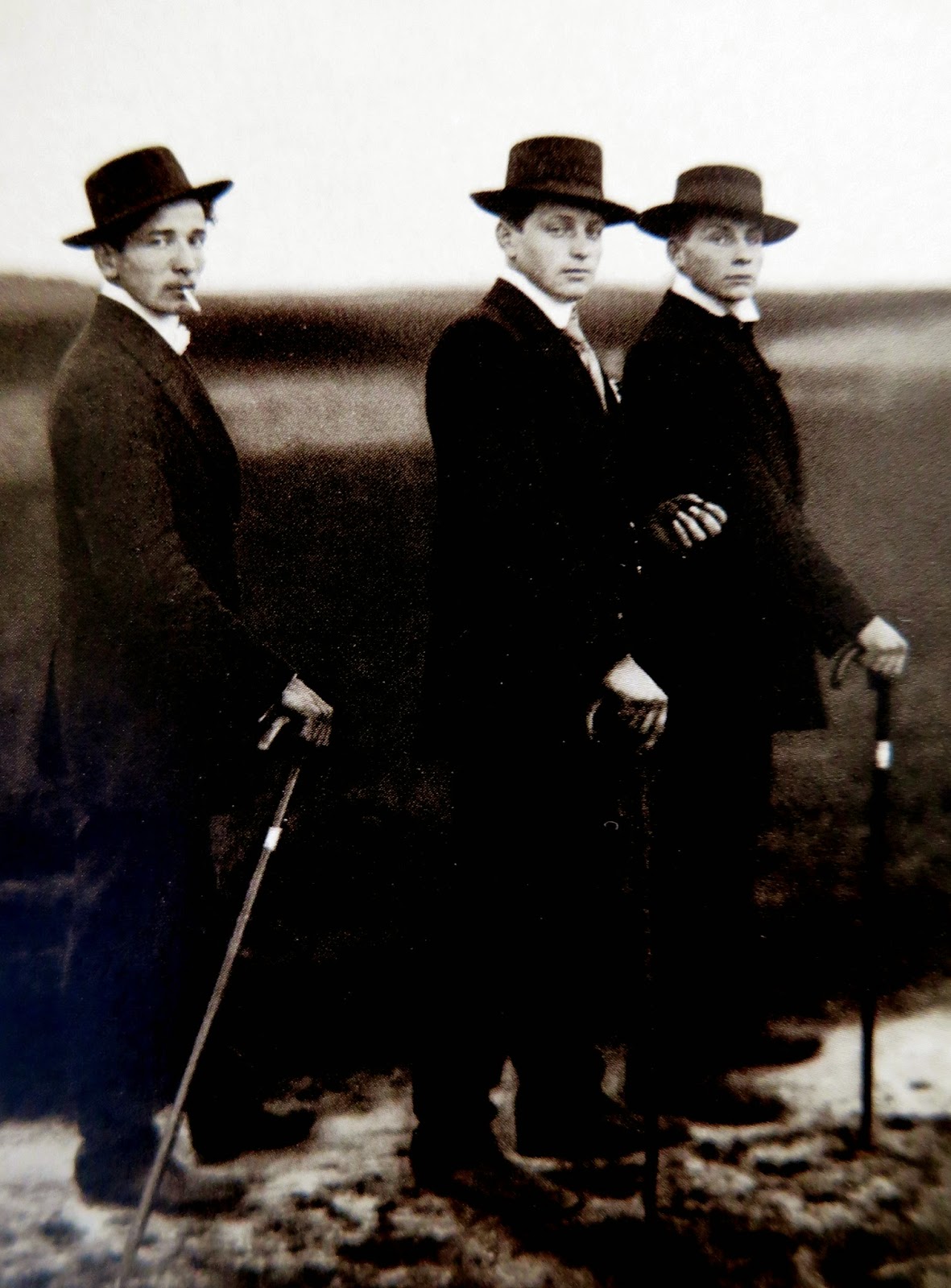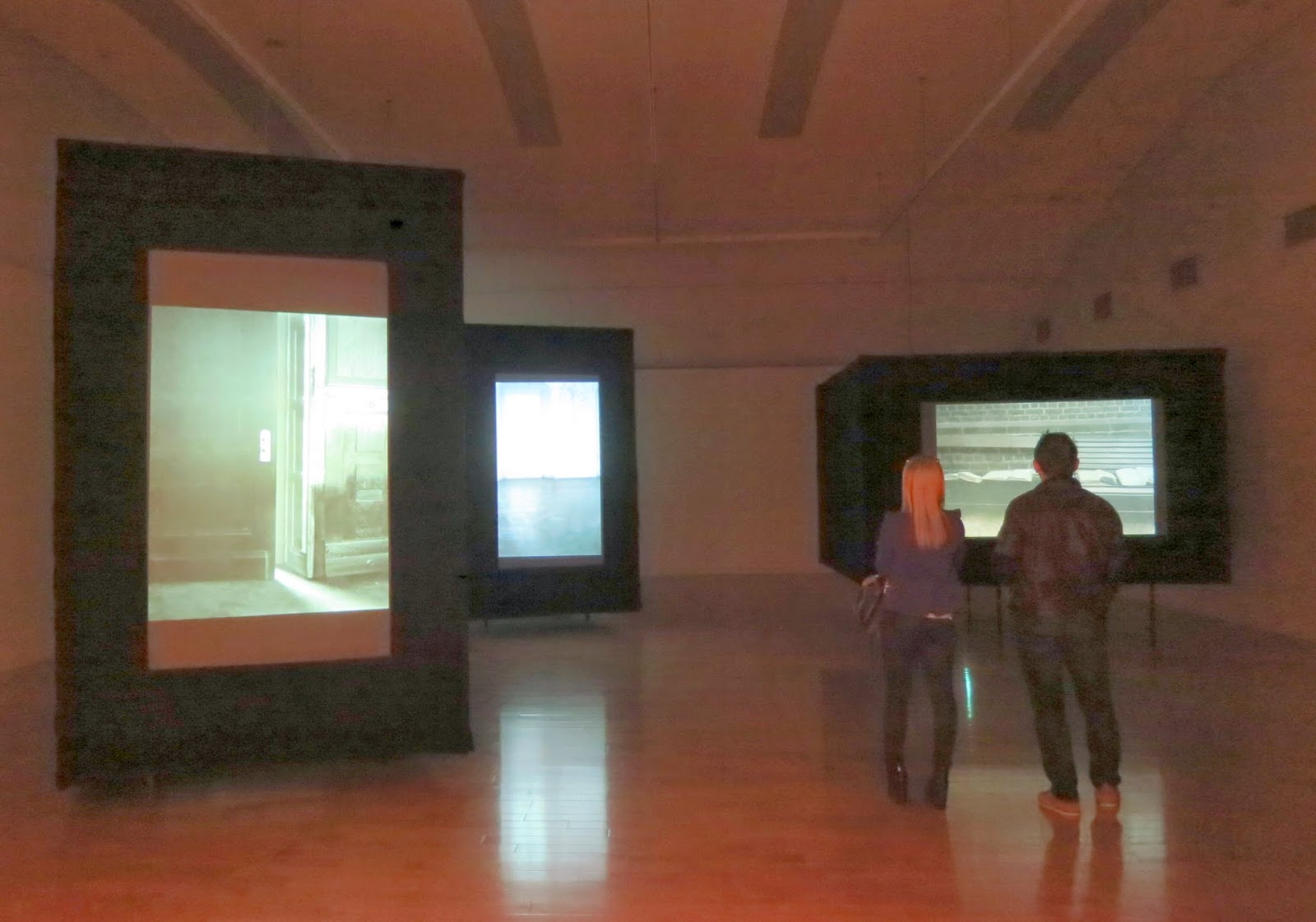Absence of Subject - The Images of Michael Somoroff and August Sander, at the Benaki Museum, Pireos.
This exhibition was revealed to me layer by layer. When we visited the Benaki last week I wanted to see the Tsarouchis exhibition but thought I might also be interested in the photography exhibition that was on, so before purchasing our tickets we went to the shop, and had a quick look at the book that accompanied the exhibition. I was taken with the minimalist photographs of Michael Somoroff so we purchased tickets for that too.
On entering the exhibition I looked at the photographs of August Sander and then moved on to the other side of the room and started looking at the photographs of Michael Somoroff which, as expected, did not disappoint. I marvelled at the minimalism of his photographs. I tend to not read the blurb at first as I want to look at the work without any preconceptions, if possible. Having finished the tour of the room, I then went to read the blurb and what a revelation that was. I had to start all over again, seeing everything with new eyes.
August Sander devoted his career to creating a series of portraits of the people of his native Westerwald in Germany during the Weimar Republic. He established categories into which he divided the population and then looked for representative types. Taking a rigorously non-political stance, he attempted to create an inclusive photographic survey of all the various occupations, professions and classes that together formed the national social structure in the years directly before WWI. Formally posed, identified only by captions specifying their social situations, Sander's sitters are always wearing the working uniforms of their profession or class. The images are thus representations of types, as he intended them to be, rather than portraits of individuals. His ambition was to create a universal portrait of humankind, a monumental documentary. Although the Nazis banned the portraits in the 1930s because the subjects did not adhere to the ideal Aryan type, Sander continued to photograph.
'Photography', he wrote, 'is like a mosaic that becomes a synthesis only when it is presented en masse'... 'I wish to give neither a critique nor a description of these people, but only to create a piece of contemporary history with my pictures, a little romance in a materialistic age'.
According to Somoroff, 'August Sander's work is the ultimate modernist classical moment'.
What Somoroff did was take Sander's photographs and he erased the subject in each, retaining only the background. By this act of erasure Somoroff confronts loss by creating it - something rarely achieved in photography. This is not photography as we are accustomed to but more about the idea of creativity. He is also establishing the idea that post-modern art isn't dislocated, but something with roots, tradition and continuity. He is concerned with the place where personal memory, cultural memory and public history collide.
'It's always been clear to me how important August Sander's work was, is. I was just amazed though when I removed the subjects to see it in its simplicity, to see how it stands up. The images are so strong, so intuitive, so well thought out and composed - it's uncanny really because you know we don't think that way when we make a photograph'.
'For me, the removal of the subject really means two things. It's to show, on the one hand, how fragile we are. They were all there standing in front of August's camera naked, emotionally vulnerable and spiritually exposed. They were together. They were life itself. But now they're all gone, which is really worth reflecting on. On the other hand, it's still there, it's still going on because we're experiencing it now and what we're experiencing is actually their absence as a reflection of their presence. Our entire experience of the world for that matter is built on the creations of our ancestors. We are a legacy. This legacy is the beauty of our own fragility and vulnerability, which allows us to have an ongoing intimate relationship with one another. This is the substrate of creation, this intimacy. And you'll find it all over the place, in my work, in August's work, in each person's actions, perceptions - everywhere, we are sowing meaning'.
The architecture of absence and silence; the philosophical implications of absence as an existential condition; photography's relationship to perception and truth.
August Sander, Blind Children at their Lessons, 1930
Michael Somoroff, Blind Children at their Lessons, 2007
August Sander, Young Farmers, 1926
Michael Somonoff, Young Farmers, 2007
August Sander, Working Class Family, 1912
Michael Somoroff, Blind Children, 2007
August Sander, Attorney, 1932
Michael Somoroff, Attorney, 2007
August Sander, Pastrycok, 1928
August Sander, Farmer on his Way to Church, 1925-26
Michael Somoroff, Farmer on his Way to Church, 2007
August Sander, Gypsy, 1930
Michael Somoroff, Gypsy, 2007
August Sander, Pharmacist, 1930
Michael Somoroff, Pharmacist, 2007
August Sander, Farmer's Child, 1919
Michael Somoroff, Farmer's Child, 2007
August Sander, Small-town Women, 1913
Michael Somoroff, Small-town Women, 2007
August Sander, The Pianist, 1925
Michael Somoroff, The Pianist, 2007
August Sander, Circus Workers, 1926-32
Michael Somoroff, Circus Workers, 2007
August Sander, Young Farmers, 1914
Michael Somoroff, Young Farmers, 2007
Girl in Fairground Caravan, 1926-32
Michael Somoroff, Girl in Fairground Caravan, 2007
August Sander, Street Musicians, 1922-28
Michael Somoroff, Street Musicians, 2007
August Sander, Court Usher, 1932
Michael Somonoff, Court Usher, 2007
August Sander, Match-seller, 1927
Michael Somoroff, Match-seller, 2007
August Sander, Varnisher, 1930
Michael Somoroff, Varnisher, 2007
August Sander, Bricklayer, 1928
Michael Somoroff, Bricklayer, 2007
Videos: Michael Somonoff
Somonoff subsequently took some of the 'altered' photographs and turned them into video, where each photograph became a moving picture
Michael Somoroff, The Pianist, 2007
You can see if you look closely at each photograph how the net curtain has moved, blown by the breeze from the open window
Michael Somoroff, Pianist, 2007
In this video the door slowly opened.


















































An interesting conceptual exercise. I shall keep looking at his website - which at present is under construction - to look at the rest of his body of work. Certainly a thought-provoking exhibition. You are getting a lot of stimulating input.
ReplyDeleteI love Somoroff's work, Olga: I love the idea behind the photographs, but I also think that the photographs are wonderful. The whole experience was very exciting.
DeleteAs for us getting a lot of stimulating input, absolutely. It's been wonderful - one of the advantages of being in a capital city, even one that is as impoverished brutalised as Athens is at the moment.